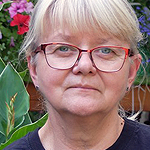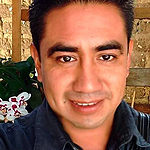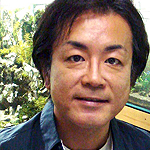Forest creek near Barcelos, Rio Negro tributaries in Brazil
5th place in Biotope Aquarium Design Contest 2019
China. Wang Peng

Volume: 300 L
Dimensions: 120×50×50 cm
List of fishes: Nannostomus eques, Paracheirodon axelrodi, Hemigrammus bleheri, Dicrossus filamentosus
List of plants: Eichhornia crassipes, algae
Description of decorations: The materials I chose were collected in rivers, riverbanks and forest parks. Some of them were purchased in China. Material includes drifting trees, branches, dried leaves (oak leaves), natural river sand, peat and coconut soil mixtures to simulate the bottom of forest streams.
Description of equipment: Filter equipment: ATMAN-CF1200 External Filter ×2 / Pre-filter ×2. Degreasing Film Filter ×2. Lamps: Netlea/Nitley LED 6500K 50W×3 / Spotlight 5W×4
Heating device: EHEIM IHAN heating rod 200W ×2 (with one device, without heating device in summer). Others: oxygen pumps.
Water parameters: Temperature: 25 ±1, PH: 6.2-6.5, GH: 5, TDS: 7
Additional info: In my aquarium, I used a lot of drifting trees, branches, dead leaves and some soil to simulate the underwater environment of forest streams in the rainy season. A large number of driftwood also provide a habitat for nitrifying bacteria. Eichhornia crassipes is a good choice. It can also purify water quality and shield light to simulate the natural environment of underwater habitats (dark and distinct). I used two larger external filters and two pre-filters for both physical filtration and nitrifying bacteria cultivation.I use pure water and a small amount of domestic water to mix to ensure the balance of GH/TDS values, because there are a lot of driftwood and dead leaves in the tank, they can control the fluctuation of PH values very well. It’s easy for me to control algae growth by changing water and controlling light time. In daily maintenance, only changing water and cleaning the glass of fish tank. In the photos and videos, you can see that the fish are in excellent condition. They like the ecological environment I simulate very much, and I am very happy about it.
INFORMATION ABOUT BIOTOPE
Description of the area surrounding the biotope: The Negro River, which means the Black River, is the largest tributary on the North Bank of the Amazon. Its source is the watershed between the Orinoco and Amazon rivers. The river is 2252.6 km in length, with an area of 620,000 square kilometers, an average annual discharge of 30,000 cubic meters per second, an average annual runoff depth of 1,600 mm, and suspended load concentration of 0.007/cubic meters. The river basin is hot and rainy with few human habitats. Because of the humus in the marshes along the coast, the river is dark.One of the small tributaries is Igarap do Daracua, located near Barcelona in the depths of the Amazon rainforest. It is covered by rain and needs to be entered by boats. A large number of interlaced drifting trees and fallen leaves (close to dense trees) are accumulated underwater, and some mud flows into the river with the arrival of the rainy season.
Description of the underwater landscape of the biotope: During the rainy season, the water level rises and floods into the surrounding forests. Some of the trees are underwater, and fish swim to parts of their native River habitats, completely covered by the canopy of the rainforest. These waters are sheltered by rainforest trees, and the underwater light is dark and distinct. Here, fish produce a lot of aggregation. There, abundant food sources were found and began to breed.Forests are the main source of natural food for juvenile and adult fish. The underwater environment also provides them with perfect habitats and shadows on the water surface to prevent overheating or even excessive drying during the dry season. The bottom bed is sandy, with a lot of drifting trees and fallen leaves and soil at the roots of flooded forests. Many branches are inserted into the water from the surface of the water, providing a good shelter for fish. No water plants were found in the environment I described, only some terrestrial plants submerged in the rainy season. Water carries a large amount of debris, which contains decomposed organic matter.
Description of the parameters of the habitat: The rainy season begins in September and ends in May. The temperature of water is about 22-24 degrees C and the pH value of water is about 6ph. In the dry season, the water level decreases and the temperature rises from May to September, and the water temperature is about 28-30 degree C. Because of the low water level, there are a lot of leaves and branches on the bottom of the river. The water contains a lot of tannins and dyes the water. “Brown” is a black river with a low pH value of 3.5-4 pH and distinct seasons. TDS:About 6-15
List of fishes and invertebrates occurring in the nature biotope: Crenuchus spilurus, Nanostomus eques, Poecilocharax weitzmani, Liosomadoras oncinus, Dicrossus filamentosus, Crenicichla notophthalmus, Mesonauta festivus, Acarichthys heckelii, Crenicichla marmorata, Heros notatus.
List of plants found in the nature biotope: Nelumbonucifera/ and some Lemna minor L
Threats to the ecology: Because it was a dense forest stream, people could only reach it by boat, so he was not cut down and mined. But when it rains in the Amazon tropics closer to where humans live, their fate is unfortunate. The annual deforestation of forests has affected the lungs of the Earth. Global warming, deterioration of air quality, abnormal climate and frequent natural disasters. God is warning humans that if it continues, we may be slowly heading for destruction in the absence of winter or summer in many years. Please put down your logging tools, stop cutting down the Amazon rains, and protect the few greens in the world.
Sources of information:
https://www.iqiyi.com/v_
https://rainforests.mongabay.
http://www.tfhmagazine.com/
https://baike.baidu.com/item/%
http://www.reef2rainforest.
https://en.wikipedia.org/wiki/
https://www.seriouslyfish.com/
https://www.seriouslyfish.com/
https://www.seriouslyfish.com/
https://www.seriouslyfish.com/
https://weatherspark.com/y/
Comments of the members of the jury of Biotope Aquarium Design Contest 2019

Such a simple recipe at face value, and a tank that every biotope aficionado should try at least once. The tiny inhabitants with their low individual biomass and small stature will struggle to overwhelm a tank of this size, and while the tetra may lack character for some aquarists, the Dicrossus pick up the charisma flag and run with it. Having kept this very selection of fish myself in the past, I can report no squabbling or compatibility issues have ever arisen.

Another excellent example of a great representation of the natural environment. I like the dark climate of rivers with a lot of roots and leaves that create a somewhat natural habitat. If the music accompanying the video were more natural, the reservoir would be a perfect defection of nature.

Pretty well done, typical setting for such habitats.

The large amount of submerged driftwood gives us a clear idea of what is recreated. This allows the water to have the amount of tannins that benefit the life cycle of the chosen species; likewise shadows inside the aquarium make interesting contrasts. Well done, congratulations!

Recreating the Rio Negro is a universal theme for aquarists like us. I myself have often challenged this theme and raised the fish that lived there, but they are sensitive to water quality so they don’t show us the original ecology unless there is a really proper environment. That’s why this aquarium is an example of a successful reproduction of their ecology.
